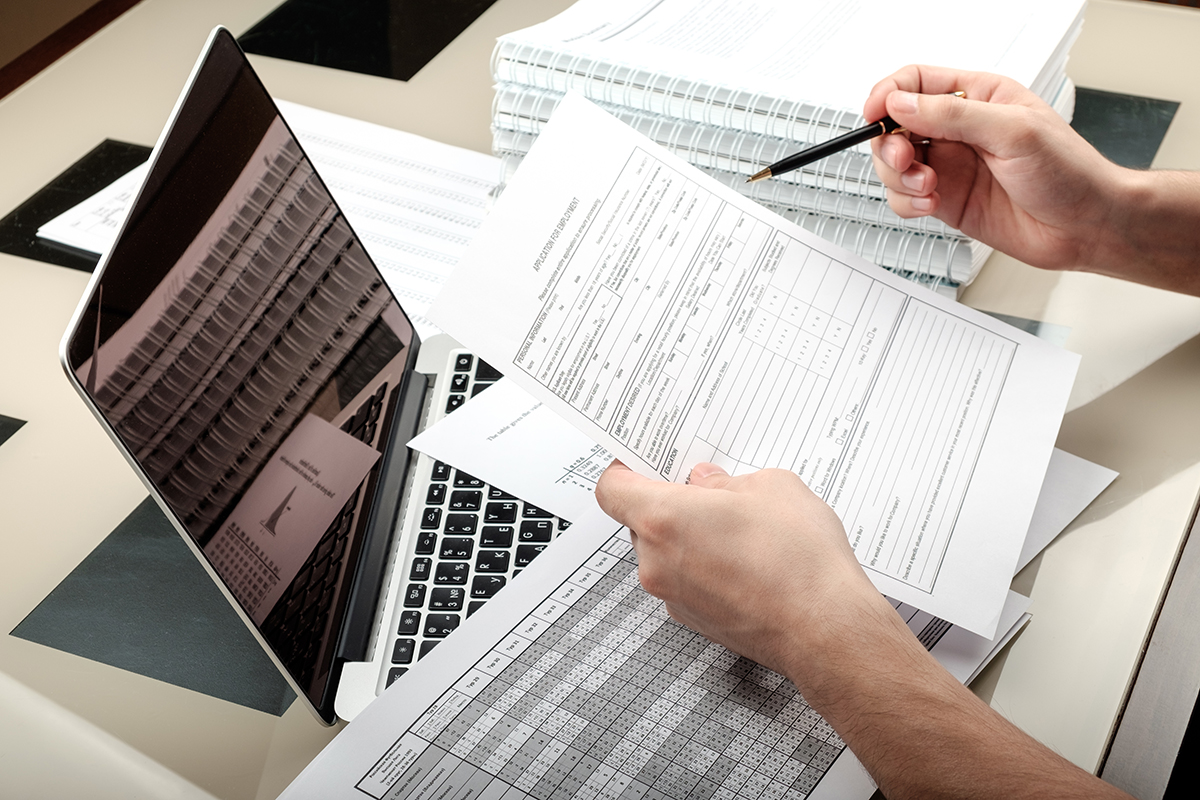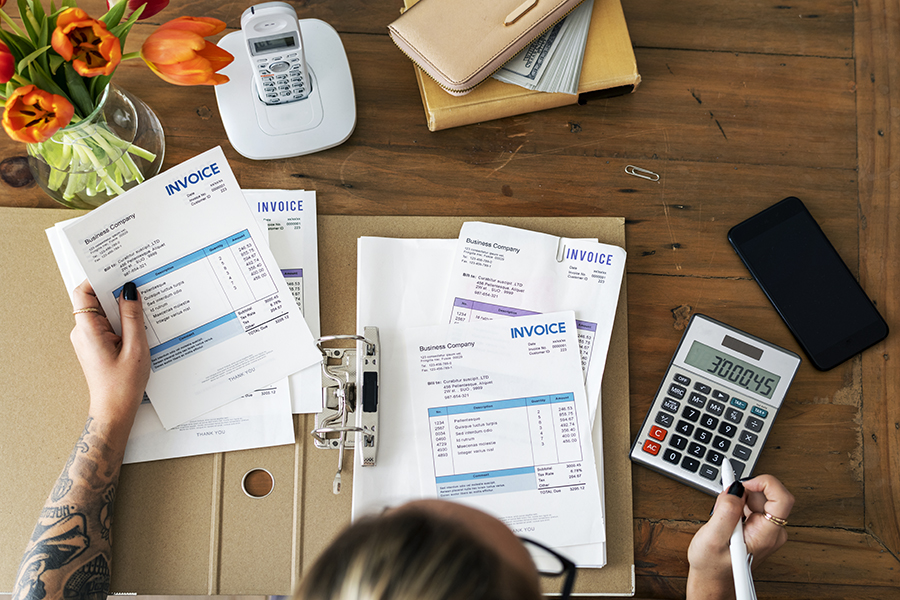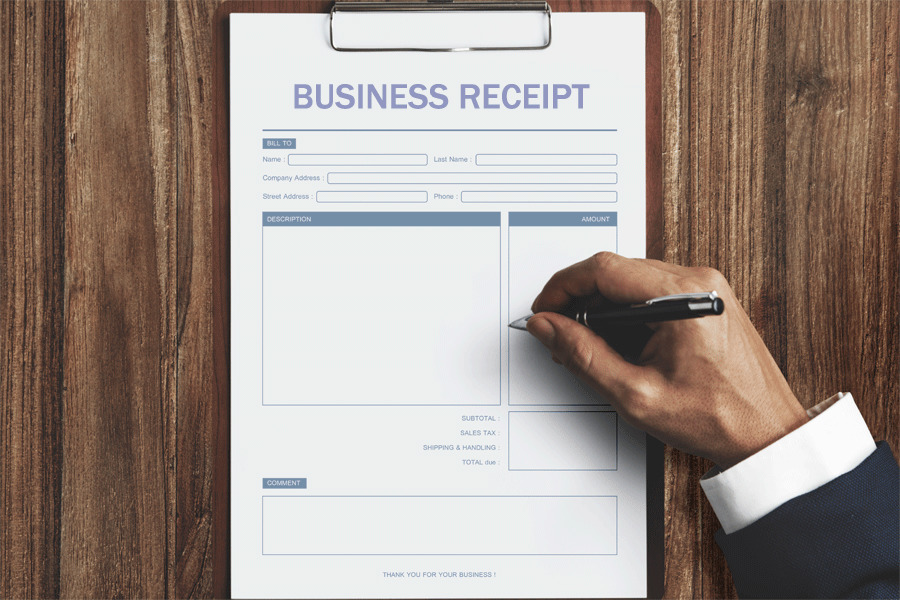A car repair receipt is an official, written document that a vehicle repair shop or mechanic gives to their customer.
It details all of the services that were performed on the car, how much each service costs, and the total of the repair. These are issued so customers have a clear, detailed list of each service they were charged for during their appointment. Auto repair shops and mechanics need to issue clear receipts so their customers know exactly what they are responsible for paying. It also ensures that the customer does not get overcharged for unnecessary extra expenses.
Furthermore, having an official receipt from an auto repair shop or mechanic enables the owner of the car to present it to their auto insurance company, which will then cover the appropriate aspects of the bill. They are also helpful because if something goes wrong with the car after it is taken to the shop, the customer can present the receipt with a clear outline of what services were performed and where an error may have occurred. It is good for customers to keep track of auto repair receipts for this kind of proof. It also helps customers keep track of when the last tune-up on their car was performed so they can stay on top of car maintenance.
Free Templates

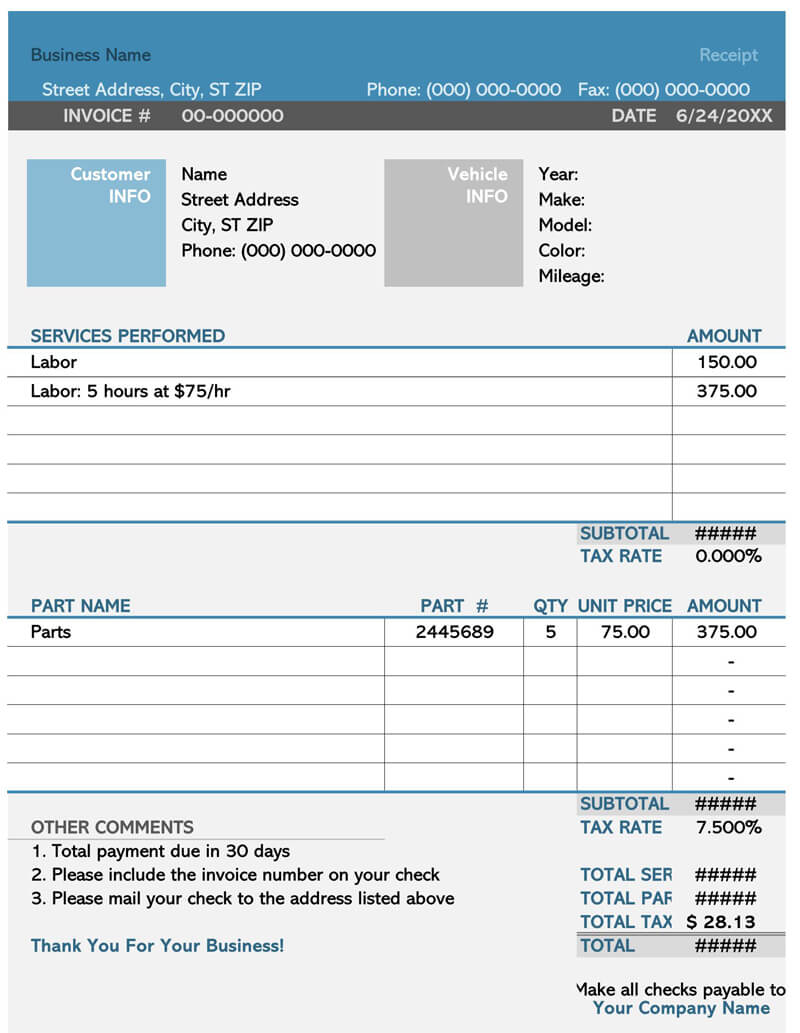
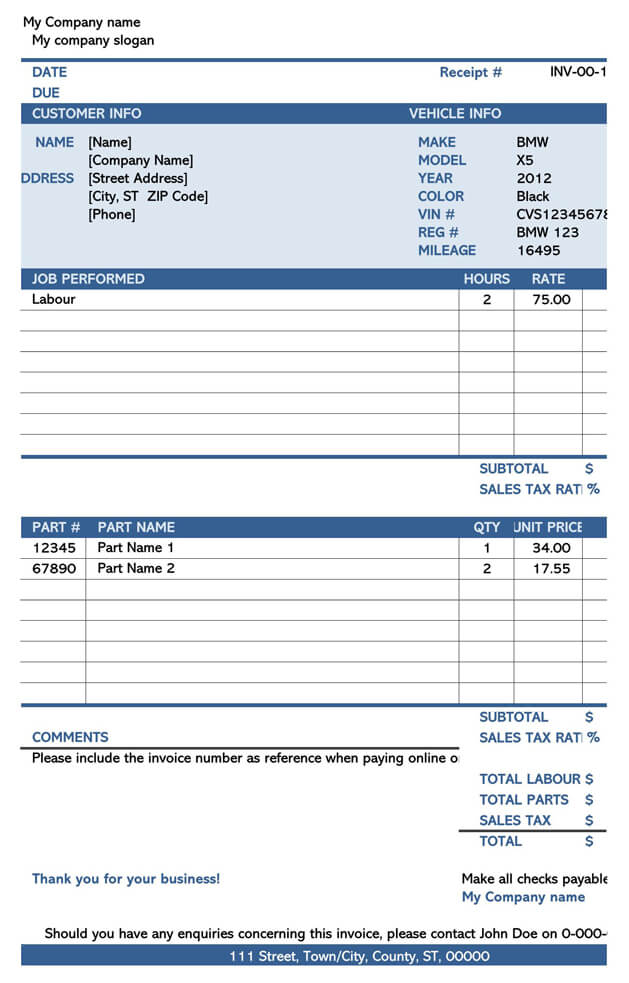


How is an Invoice Different from a Car (Vehicle) Repair Receipt?
An invoice is a bill issued to a paying customer that details the aspects of the car repair that they are responsible for paying to the auto repair shop or mechanic. On the other hand, a repair receipt is an itemized breakdown of the bill that was already paid by the customer. In other words, an invoice tells the customer what they still need to pay, while a receipt provides proof of purchase that the customer already made their payment.
Format of a Receipt
These are broken down into four sections:
- Repair Company Information: The receipt should include the name, address, telephone number, website, and any other contact information for the company or mechanic who performed the service. This enables the customer to contact the company or mechanic easily, should any questions or concerns arise about the services performed to their car.
- Customer Information: The customer’s name and contact information should be included on the receipt. It should also include the customer’s vehicle make and model, as well as their license plate number. This gives the customer proof of purchase. If their name is not included, there would be no way to prove that they are the ones who made the payment. Likewise, including their specific car information gives them proof that the company performed services on their car.
- Insurance Information: The customer’s auto insurance information should be included so they can present the receipt to their insurance agency. If the customer was in an accident or if someone else damaged their car, they should have a claim number from their insurance company. This claim number should be included, as it makes it convenient for the auto insurance company to access information for their records.
- Repairs and Money Information: It should include an itemized breakdown of each repair that was conducted, any parts that were replaced, and any other services rendered to the vehicle. The cost of each separate service should be listed so the customer can see a clear breakdown of what they paid for. It should also indicate what method of payment the customer used to pay.
Conclusion
The receipts are helpful for customers to be aware of what they are paying for when they take their car in for a repair. Issuing accurate receipts will also help when it comes to taxes. Having receipts helps individuals and businesses keep track of any tax-deductible expenses. Overall, providing clear and detailed receipts is a good business practice, and it benefits both businesses and customers.


